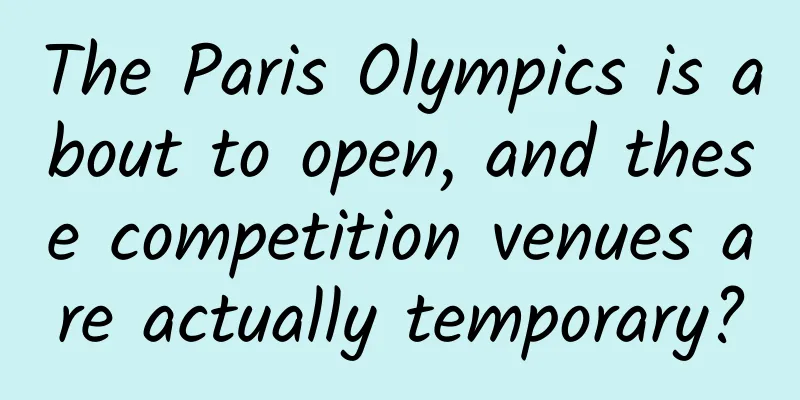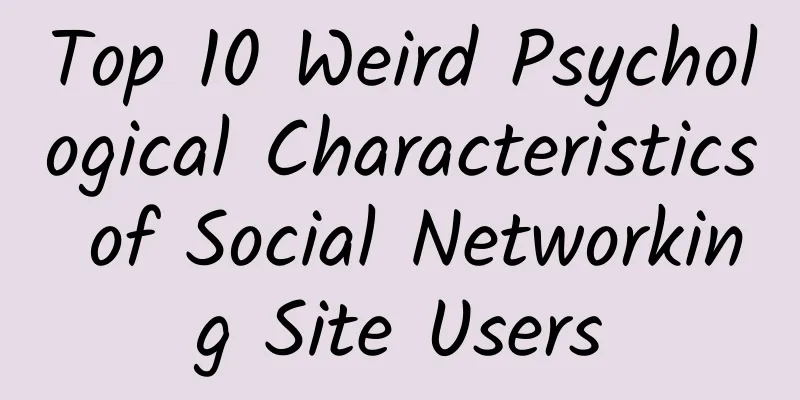Operators, how can you track hot spots correctly and efficiently?

|
I believe that our operations colleagues, especially those working in new media , have all had the experience of receiving a sudden phone call or message from their boss in the middle of the night or on holidays urging them to follow XX hot topics. There is no way. We cannot blame the leaders entirely. For those working in this industry, sensitivity to hot spots is the most basic quality. In order to achieve KPI and improve data, faced with sudden hot topics, operations managers have to put down their current tasks to chase hot topics and leverage the momentum to promote content. For example, at the end of the National Day holiday, the announcement of Lu Han & Guan Xiaotong’s relationship made many editors stuck on the road suddenly go from being anxious about traffic jams to being annoyed at not being able to catch up with the hot spots. Can’t you wait until I go back to the toilet, wash my face, and eat a hot meal before announcing it? Okay, without further ado, today Brother 7 will talk to you about some “hot topics”, hoping that it will be of some reference and help to you in your daily work. 1. What is a “hotspot”? We talk about hot topics, follow hot topics, and take advantage of hot topics all day long. Simply put, a hot spot refers to news or information that is of great interest or popularity to the general public, or to topics or events that attract attention during a certain period of time, such as tourist hotspots, social hotspots, etc. So what are the “hot spots” that operators should pay attention to? There is a relatively simple criterion for operators to pay attention to hot topics, which is "whether it is flooding the screen", especially on WeChat and Weibo. I believe that operators are quite clear about this. Back to the hot topic itself, the reason why it can become a hot topic is that its content itself is accepted and spread by the majority of people. We are overwhelmed by massive amounts of information every day. We will definitely only filter out those contents that have some relevance to our lives or experiences and actively spread them, and then ignore the vast majority of "junk information". In addition, we will more or less have some opinions or suggestions of our own on the content that we actively disseminate. Then, through complex social relations, active and passive reception and active and passive dissemination of one thing occur, and the so-called "hotspot" is born. The reason why operators chase hot spots is closely related to the " traffic gene" carried by the "hot spots" themselves. However, operators must understand that the hot topics we want to pursue must be valuable, but the higher the popularity, the greater the value. Only those that are in line with our own brand and product value attributes are the content we want to follow up. 2. Why should we chase “hot spots”? In actual work, many editors chase hot topics every day until they feel dizzy, write until they are numb, and exhaust themselves, but there is still no "winning" "explosive article". It is said that 99% of chasing hot topics is futile, but when will that 1% appear? Those of us who dream of chasing hot topics all dream of becoming popular. However, while working hard, have you ever thought about what the purpose of chasing hot topics every day is? In fact, this question will be clearer when combined with marketing explanations. Brother 7 mainly explains it from the following 4 points: 1. Brand communication Just as we mentioned in the first part, if the operator ignores the brand image and product value and just chases hot topics for the sake of chasing hot topics, then all his operational actions are undoubtedly worthless. We use hot information to blend brand image and product value concepts into relevant pictures, texts, audio and video content, cleverly deepening users' understanding of the brand and products, and achieving convenient and effective social communication. Of course, as everyone knows, the brand that does this well is Durex . 2. Operation & Marketing Conversion In most cases, chasing hot topics is for marketing purposes, or simply put, it is "selling things." By leveraging hot topics or events with wide coverage and high audience attention, combined with product attributes, we can promote sales conversions and increase revenue. For example: every year on Double 11 and Double 12, various e-commerce platforms will follow the hot spots to increase platform sales. According to Durex’s WeChat Mall data, sales of creative products based on hot topics are 40% higher than usual. For content operators , following hot topics can help them complete their KPI faster. If the timing is right and luck is good, one popular article will be enough. The number of readings, comments, reposts, likes, and collections, all hot topics can be fed back to you. So, traffic is king! 3. Learn and improve The quality of graphic content is an important criterion for testing whether a new media editor is qualified. Hot topics are the hottest content at the moment and are most easily discussed by everyone. Your angle, posture, and writing style in chasing hot topics can often get the greatest attention and exposure. New users may follow you because of your hot articles, and you can also improve yourself through content data and user feedback. Therefore, editing hot content itself is also a kind of learning and improvement for operators. Of course, Brother 7 would also like to kindly remind you that sometimes when following hot topics, you will sacrifice content quality for speed. You must judge the situation and act with caution. 4. In order to avoid following the hotspot Of course, this statement is a bit pretentious. Brother 7 has no other meaning, just like what Fan Bingbing once said, "I am a wealthy family myself." The same goes for marketers and operators. If one day we no longer have to follow behind others, and others will respond to our every move, then why would we need to follow other hot topics? We ourselves are the hot topics. However, when you wake up from a dream, you still have to return to reality and strive to make your dreams come true! 3. Different hot topics are promoted at different times, and different hot topics are followed up The main purpose of us keeping our phones in hand and scrolling through the screen every day is to check the latest news, see if there are any hot topics to follow, which celebrities have updated their Weibo, and if there are any new events happening somewhere so that we can respond quickly. The most critical factor in this series of behaviors is "time". Whether time can be converted into "effectiveness" depends on the operator's response speed to hot spots, and whether effectiveness can be converted into "effectiveness" depends on the quality of the content related to the hot spots. Since the time factor is very important, how do we need to respond to different time nodes within the 24-hour hotspot validity period that is usually considered on the Internet? Brother 7 compiled a picture and shared it with you as a personal opinion for reference: It should be noted that the names of the time stages in the horizontal axis of the figure are only an overview of a period and cannot reflect the actual changes in the development cycle of all hot events, so please keep in mind: Phase 1: Within 1 hour after a hotspot occurs Many people like to call it the golden period of hot events. During this time, operators have the sensitivity to hot spots and then they must respond to them. The execution must be in place. Under normal circumstances, in order to save time, most of them are content porters, using simple and direct methods such as text messages and express reports to tell users: who is where and what happened. Racing against time is also about ensuring the timeliness of news so that users can be informed earlier and faster, and traffic can be quickly captured. Phase 2: 2-3 hours after a hotspot occurs 2-3 hours after a hot topic occurs, news content is basically everywhere. If you want to grab more traffic, you can only change your perspective in content construction. At this time, exploring the causes and truth of hot events, digging out and analyzing through past signs, taking inventory, or explaining the content through charts can attract more audience attention. Phase 3: 3-6 hours after a hotspot occurs After entering this stage, some articles analyzing opinions gradually appeared, especially some authoritative celebrities, experts or organizations expressed various views and explanations, and some complaints were also heard along the way. In-depth analysis has gradually become the mainstream content of hot events. Some people will also incite some opinions and views in an attempt to dominate the direction of public opinion, and slowly form factions of comments. There are also many cases where hot events evolve into quarrels and fights, which can then evolve into secondary hot topics for follow-up. Stage 4: 6-12 hours after the hotspot occurs The first few stages are basically centered around the hot spots themselves, and the content materials, image design and even H5 development that follow the hot spots are basically put into operation online. If subsequent reports want to attract more traffic, they must follow the development trend of hot topics and people's psychological acceptance of hot events. Basically, they can start from hot topics to discuss social relations, logical reasoning, and provide some pertinent opinions and suggestions based on themselves or the products . The above is an overview of the differences in content that needs to be followed up at different times after a hot spot occurs. I dare not say that it is very accurate, but just throw out some ideas as a reference. After all, each hot event has independent individual differences, and its development trend may be full of twists and turns (such as the Xue Zhiqian and Li Yutong incident), which leads to the continuous extension of the hot development cycle. People who follow the hot topics are very happy to write about them, and the audience is also very satisfied to watch them. However, Brother 7 believes that as long as the team has identified the hot spots to follow up, it is worth it for the relevant departments to work overtime together to get things done! 4. The “rules” and “taboos” of following hot topics When it comes to following hot topics, I would like to emphasize two key words first: "chasing hot topics" and "taking advantage of hot topics". These two words have two states. One is the content output centered around hot topics, and the other is marketing decisions based on hot topic information combined with one's own brand and product tone . Of course, what we usually say also includes the "chasing hot spots" mentioned in this article, which is a macro concept that encompasses the meanings of the above two words. Brother 7 has his own opinion on chasing hot topics: respond to hot events, find the best combination of hot events and one's own brand tone to produce and spread content. This is what I understand as chasing hot topics and leveraging marketing . Brother 7 kindly reminds you that when “chasing” hot topics, you should pay attention to the picture below and never separate your hot content from your product brand. So, faced with many hot spots that may come at any time, what are the considerations of “chasing” and “not chasing”? What should we pay attention to when chasing hot topics? Below, we will describe it from two aspects for your reference: 1 ) What are the requirements for following hot topics? Influence When we choose to follow a hot event, we focus on its influence. The feedback on influence is often reflected on the Internet platform as the popularity of the topic , such as descriptions such as "screen-sweeping level" and "10W+". For this, we can refer to Baidu Index, Weibo popularity and various popular rankings as reference. Of course, operators and hot spots must pay attention to the differences in platform attributes . For example, popular videos on Bilibili may not be suitable for the audience users of other video websites. Therefore, when following hot topics, we must also consider the audience that pays attention to hot events . Hot events such as Xue Zhiqian and Lu Han have fermented greatly on Weibo. As hot events in the entertainment industry, the majority of people who care about these things are still their fans. What operators need to consider when chasing hot topics is whether the audience of your platform will also be interested in this hot topic? Timeliness Regarding timeliness, we have already discussed it above. When chasing hot topics, we must race against time and follow up and make judgments based on the development of events . How should we chase them at different stages? How to get into the main points of the content is very important. Transmissibility Hot topics with wide spread are worth pursuing, as they can easily bring us more traffic. To be widely spread, an article must meet three requirements: be simple, interesting, and useful, so that users will feel it is worth forwarding and sharing. The wide spread of hot topics is often accompanied by controversial and extended content, which can extend the timeline of dissemination (vertical) and the scope of topic discussion (horizontally). Rate of Return The purpose of chasing hot topics is to gain attention and conversion. There is no value in doing things without rewards. When we talk about the rate of return of chasing hot spots here, we must calculate the human, financial, material, time and opportunity costs we have to invest when chasing hot spots. Whether it is worth doing page design and H5 development to pursue a hot topic, and whether it is necessary to break the development plan and work overtime to do a special topic, these are all worth our comprehensive consideration. 2 ) What are the taboos in chasing hot topics? I believe many people know something about the taboos of chasing hot topics, but in actual work they will still step on minefields intentionally or unintentionally. At the very least, they will be scolded to death, at worst, they will be reported, blocked, or even risk having their account blocked. Don't blindly follow the trend Some people want to catch the trend, and when they see others following the trend, they also want to catch the trend. This is quite common in the new media departments of many companies. Many leaders sometimes force editors to follow the trend, and in the end they don’t know what they have written. Not only is it of no help to the brand, but the worst thing is that they lose the attributes of their own platform. Be careful when using brand or celebrity images Well-known brand logos or images of social celebrities and sports athletes are some of the situations that we cannot avoid when chasing hot topics. Operators must learn to handle them skillfully when chasing hot topics to avoid being involved in unnecessary disputes. In the short term, it will cause an "incident" effect, but from the overall situation, it will cause considerable damage to the corporate image and economic level. Avoid taking sides or attacking opponents An operator should have his or her own opinions when analyzing and commenting on hot topics, and his or her stance should be objective. He or she should not bring in personal opinions, take sides subjectively, or belittle opponents in order to promote his or her own company . This is very low behavior. Take the Xue Zhiqian incident as an example. They reunited in a high-profile manner one moment, but were involved in a quarrel the next. Some accounts went from supporting Xue Zhiqian and shouting "believe in love" to turning around and raising the banner of overthrowing Xue and scolding him for being a scumbag. Putting aside the true situation of the protagonist of the incident, as an operator, you are too subjective in taking sides and following the trend, resulting in inconsistent opinions. Not only will you lose the credibility of the public platform , people will also think that your content is too frivolous, and that you will easily express your opinions without any supporting analysis. Avoid chasing negative hot spots You must not follow hot topics that may have a negative impact on social trends and brand building. In simple terms, you should avoid content related to pornography, gambling, and drugs. Such as the Uniqlo incident , drug abuse, violence, gang-related crimes, etc. Use catastrophic hotspots with caution Hot spots such as natural disasters and man-made disasters are what we least want to see, such as landslides, mudslides, earthquakes, and fires. They are life-threatening. Every brand must have social awareness and should not dream of attracting traffic from disaster hot spots. Sensational marketing will only arouse public anger. Only those who stay true to their original aspirations, send low-key blessings and be action-oriented can stand out. A successful example is the 100 million yuan donation made by Wanglaoji ( Jiaduobao ) at the 5.12 Wenchuan earthquake donation gala. Political hot spots This does not need much elaboration. Every Internet user must strictly abide by relevant regulations and not touch restricted areas at will. Of course, operators must be aware of this. When a hot topic comes, they must understand why they are following it. Why not chase? Only in this way can we truly control and leverage hot spots. Operators must have correct values, and not spread rumors or violate morality for the sake of traffic. Creating content is about being a human being, and promoting brand image is about building popularity. Content created against conscience for the sake of short-term gains will only lose people's hearts. Finally, the editor reminds you again to be clear about your purpose when chasing hot topics, and not to chase hot topics just for the sake of chasing hot topics. The best way to follow hot spots is to combine the correct information with your own reasonable insights, combine with brand attributes, find the reasonable connection point with hot spots, and strive to achieve emotional resonance with users. The author of this article @7哥 is compiled and published by (Qinggua Media). Please indicate the author information and source when reprinting! Product promotion services: APP promotion services, information flow advertising, advertising platform |
<<: What are the four common mistakes you should pay attention to when applying ASO?
>>: How to write the Alipay interface for the Douyin mini program?
Recommend
Short video operation: 3 tips to break through the viewing volume
The most troublesome problem in short video opera...
Is a food blender a nutrient absorption booster or just a waste of money?
In recent years, food wall breakers have graduall...
"AI football player" is born, capable of dribbling, stealing, passing and shooting
Football is a globally popular ball sport that em...
A Complete List of English Terms for Advertising
When using professional tools, we can always retu...
These 3 information flow cases increased my monthly salary to 30,000!
Next, let’s look at some interesting cases. Case ...
Manufacturers face difficulties, but the domestic smartphone market is far from saturated
It is obvious that domestic smartphone manufactur...
The summary of marketing cases in the first half of 2017 is all in these four words
This is the third article in the mid-year review ...
Live | Analysys CTO Guo Wei: Lean Data Analysis - How to make your company have the same analytical capabilities as BAT
[51CTO.com original article] Every enterprise hop...
How to distinguish between Douyin information flow delivery and Douyin+?
According to official statistics, the official da...
Barrage module
Source code introduction: sliding channel selecti...
The hoopoe's Mohawk hairstyle is actually showing off "I stink!"?
The hoopoe (Upupa epops), one of the most widespr...
Strange quasi-periodic flashes were found in the Sagittarius A black hole, flashing once every 30 minutes
Astronomers using the Atacama Large Millimeter/su...
Do you care about what others think?
© The Good Men Project Leviathan Press: “You will...
World Psoriasis Day | Don’t brag, this kind of “ringworm” cannot be ignored!
October 29 is World Psoriasis Day. Psoriasis, com...







![Efficient employment class for emotional counselors, achieving a side job with a monthly income of 50,000+ [audio course]](/upload/images/67cc339626c72.webp)

